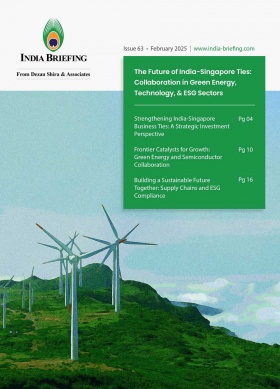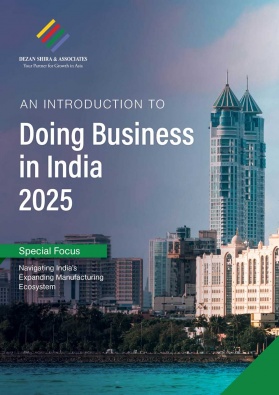Indian Pharma on Alert as US Slashes Drug Prices Under MFN Policy
US President Donald Trump has issued a new executive order mandating pharmaceutical companies to reduce the prices of drugs sold in the United States. The directive aims to align drug prices in the US with the lowest rates paid by other countries for the same medications.
Industry experts suggest that this policy could potentially result in an increase in medicine prices by India’s pharma sector, as global pricing dynamics adjust in response to the US move.
On May 12, 2025, US President Donald Trump signed an executive order aimed at slashing prescription drug prices by 30 percent to 80 percent. The directive seeks to align US drug prices with those paid by other high-income countries. Trump termed the policy the “Most Favored Nation” (MFN) pricing model, asserting that the US should not pay more than the lowest price charged globally for the same drug.
The order provides pharmaceutical companies with a 30-day window to voluntarily reduce prices. If they fail to comply, the US Department of Health and Human Services (HHS) will implement a pricing model that benchmarks US drug prices against those in other wealthy nations.
During a press conference, Trump has said that the US government will impose tariffs if the medicine costs in the US did not match those in the other countries.
Understanding MFN policy in pharma pricing
Under the General Agreement on Tariffs and Trade (GATT), 1994, all World Trade Organization (WTO) members are required to extend MFN treatment to one another. This principle prohibits discrimination among trading partners, ensuring that any preferential treatment given to one member—such as reduced tariffs—must be extended to all.
Trump’s version of MFN applies this principle to drug pricing, aiming to match US prices with those in the lowest-paying country. For instance, if a drug is sold for INR 1000 (US$11.71) in India, pharmaceutical companies would be barred from charging more for the same drug in the US. This move, Trump argues, would finally bring “fairness to America”.
Potential impact on India’s pharmaceutical industry
India, home to one of the largest pharmaceutical manufacturing bases, could feel an impact with Trump’s latest order. India’s pharmaceuticals sector is the fifth-largest supplier of drugs to the US.
|
US Imports of Pharmaceutical Products from Global Markets in 2024 (Value US$ Billion) |
||
|
Rank |
Region/country |
Value |
|
1 |
Ireland |
50.3 |
|
2 |
Switzerland |
19 |
|
3 |
Germany |
17.2 |
|
4 |
Singapore |
15.26 |
|
5 |
India |
12.72 |
|
6 |
Belgium |
12.39 |
|
7 |
Italy |
11.57 |
|
8 |
China |
7.84 |
|
9 |
Japan |
7.42 |
|
10 |
United Kingdom |
7.29 |
Source: ITC Trade Map
Market experts suggest that, in response to pricing pressures in the US, pharmaceutical firms may shift the burden to lower-cost markets such as India by pushing for price increases there.
According to India’s national pharmaceuticals trade body, Pharmexcil, nearly one-third of India’s pharmaceutical exports go to the US, with exports rising by 16 percent to approximately US$9 billion in the fiscal year of 2024-25. Any downward pressure on US prices is likely to disrupt this trade dynamic.
|
Top 10 Export Destinations for India’s Pharmaceutical Products (Value in US$ Million) |
|||
|
Rank |
Country/region |
FY 2023-24 |
FY 2024-25* |
|
1 |
US |
8,079.9 |
8,667 |
|
2 |
UK |
679 |
787 |
|
3 |
Brazil |
416 |
661 |
|
4 |
France |
535 |
613 |
|
5 |
South Africa |
674 |
608 |
|
6 |
Canada |
434 |
535 |
|
7 |
Netherlands |
533 |
530 |
|
8 |
Nigeria |
440 |
474 |
|
9 |
Russia |
386 |
472 |
|
10 |
Belgium |
351 |
466 |
Source: Department of Commerce, Ministry of Commerce and Industry, GoI
*Trade data for FY 2024-25 is provisional and subject to update in the coming months.
|
India’s Pharmaceuticals Products* Trade |
||
|
Year |
Trade activities |
Value in US$ million |
|
FY 2016-17 |
Export |
16,050 |
|
Import |
4,401 |
|
|
FY 2017-18 |
Export |
16,450 |
|
Import |
4,834 |
|
|
FY 2018-19 |
Export |
18,300 |
|
Import |
5,579 |
|
|
FY 2019-20 |
Export |
19,826 |
|
Import |
5,671 |
|
|
FY 2020-21 |
Export |
23,472 |
|
Import |
6,309 |
|
|
FY 2021-22 |
Export |
23,470 |
|
Import |
8,067 |
|
|
FY 2022-23 |
Export |
24,168 |
|
Import |
7,020 |
|
|
FY 2023-24 |
Export |
26,501 |
|
Import |
7,034 |
|
|
**FY 2024-25 |
Export |
25,503 |
|
Import |
6,909 |
|
Source: Department of Commerce, Ministry of Commerce and Industry, GoI
*The trade figures account for two sub-categories within the segment i.e., bulk drugs and drug intermediates, and drug formulation and biological. The table does not include data on Ayush and herbal products, and surgical products.
**Trade data for FY 2024-25 is provisional and is subject to update in the coming months.
Indian pharma giants with high US market exposure
The US is a key export destination for India’s pharmaceutical industry, with many major firms relying significantly on US revenues. However, Trump’s new executive order on c=drug pricing could have substantial implications for these companies. Below is a breakdown of top Indian pharmaceutical firms with notable exposure to the US market in FY2023-24.
- Aurobindo Pharma: Aurobindo Pharma leads the pack with 48 percent of its revenue in FY 2023-24 derived from the US. The company has a strong presence in the US generic drug market, especially in oral solid dosages. Aurobindo Pharma’s revenue distribution region-wise:
- US: 48 percent
- Europe: 25 percent
- Growth markets: 9 percent
- Others: 21 percent
The company manufactures and markets a wide array of pharmaceutical products, including generics, APIs, biosimilars, injectables, and vaccines. Its therapeutic medicines portfolio spans neurology, cardiovascular, antiretrovirals, and other key areas. With exports to over 125 countries, Aurobindo earns more than 70 percent of its revenue from international markets and ranks among the top 10 generic pharma firms globally.
- Piramal Pharma: In FY 2023-24, Piramal Pharma generated 41 percent of its revenue from North America, marking a substantial dependency on the US market. As per the company’s annual report of FY 2023-25, Piramal Pharma’s revenue share by region was as follows:
- North America: 41 percent
- Europe: 25 percent
- India: 20 percent
- Japan: 4 percent
- Others: 10 percent
Piramal holds a strong foothold in the US inhalation anesthetics market, with products such as Sevoflurane and Isoflurane. Its Gablofen brand leads the US intrathecal space with over 70 percent market share.
Operating as a fully integrated Contract Development and Manufacturing Organization (CDMO), the company reportedly offers end-to-end services to global pharmaceutical firms. Its product lines include hospital generics, complex formulations, and over-the-counter wellness offerings in India.
- Gland Pharma: Gland Pharma derived 54 percent of its revenue from the US in FY 2023-24, driven by increasing volumes of products like Ketorolac Tromethamine, Rocuronium, Enoxaparin Sodium, and Carboplatin. As per the company’s annual report of FY 2023-24, its share of revenue from global market/regions is as follows:
- US: 54 percent
- Europe, Australia, New Zealand, Canada: 22 percent
- Others: 26 percent
Gland specializes in complex injectables across therapeutic areas such as anesthesia, anti-infectives, oncology, cardiovascular, and ophthalmology. The company operates eight manufacturing units and two advanced R&D centers in Hyderabad.
- Sun Pharma: Sun Pharmaceutical, India’s largest drug manufacturer, in its annual report of FY 2023-24, reported 32 percent of its revenue from the US, alongside a strong domestic market share. Its revenue share by region is as follows:
- US: 32 percent
- India: 31 percent
- Emerging Markets: 18 percent
- Rest of World: 14 percent
- APIs & Others: 5 percent
Sun Pharma is the second-largest generic dermatology company in the US. It manufactures diverse range of products including branded and unbranded generics, specialty pharmaceuticals, and APIs across key therapeutic areas like oncology, gastroenterology, neurology, and cardiology.
- Dr. Reddy’s Laboratories: Indian pharmaceutical manufacturing giant, Dr. Reddy’s Laboratories continues to rely heavily on the US market. The company’s quarterly results statement notes that 47 percent of its generic’s revenue comes from the US.
Dr. Reddy’s generics business revenue distribution:
- US: 47 percent
- India: 17 percent
- Emerging markets: 17 percent
- Europe: 7 percent
- PSAI and others: 32 percent
Dr. Reddy’s was licensed by Merck & Co., an American multinational pharmaceutical company, to sell an authorized generic of Simvastatin (Zocor) in the US. The manufacturing giant’s product range spans therapy areas including oncology, gastroenterology, dermatology, diabetes, and cardiovascular disease.
Safeguarding India’s IP regime amid global pressures
The Global Trade Research Initiative (GTRI) warns that pharmaceutical companies may use Free Trade Agreements (FTAs) to push for TRIPS-plus provisions— intellectual property (IP) protections that go beyond WTO requirements. India, however, has long resisted such measures to preserve access to affordable medicines. Some of the key TRIPS-plus provisions India has resisted are as follows:
- Data exclusivity: India allows use of existing trial data for faster generic approvals.
- Patent term extensions: India adheres strictly to the 20-year term.
- Patent linkage and broader eligibility criteria: These are tools for evergreening—extending monopoly rights beyond patent expiry.
India’s IP regime is fully compliant with the WTO’s TRIPS agreement, and prioritizes public health, affordability, and innovation. GTRI emphasizes that this balanced framework has made India the world’s leading producer of affordable generics, supplying critical medicines across the developing world.
The WTO Agreement on Trade-Related Aspects of Intellectual Property Rights (TRIPS) establishes uniform standards of IP protection that all member countries are required to uphold for one another. This agreement outlines the globally accepted minimum standards for various forms of intellectual property rights (IPRs), including patents, copyrights, industrial designs, and more.
The term “TRIPS-Plus” or “WTO-Plus” refers to provisions that go beyond the basic requirements set under the TRIPS Agreement, offering enhanced levels of IP protection.
Some key TRIPS-Plus measures include:
- Extending patent protection beyond the standard 20-year term.
- Granting data exclusivity and market exclusivity to rights holders.
- Introducing provisions that support the “evergreening” of patent practices that prolong patent life through minor modifications.
These enhanced protections are often applied in sectors like generic pharmaceuticals and agrochemicals, where India has established a strong global footprint.
Pushback from industry and legal ambiguities
The pharmaceutical industry globally has voiced concern against the US’s drug pricing policy. Manufacturing companies argue that steep price reductions in the US could erode profits and limit investment in research and development. Industry players are currently lobbying for safeguards.
There is also uncertainty regarding the legal authority under which the executive order can be enforced. Critics note that similar executive actions in the past have been challenged in court and eventually blocked.
This drug pricing order was first proposed by Trump in 2020; however, it was blocked by the US federal courts and eventually dropped during Joe Biden’s presidency.
(US$1 = INR 85.38)
About Us
India Briefing is one of five regional publications under the Asia Briefing brand. It is supported by Dezan Shira & Associates, a pan-Asia, multi-disciplinary professional services firm that assists foreign investors throughout Asia, including through offices in Delhi, Mumbai, and Bengaluru in India. Readers may write to india@dezshira.com for support on doing business in India. For a complimentary subscription to India Briefing’s content products, please click here.
Dezan Shira & Associates also maintains offices or has alliance partners assisting foreign investors in China, Hong Kong SAR, Dubai (UAE), Indonesia, Singapore, Vietnam, Philippines, Malaysia, Thailand, Bangladesh, Italy, Germany, the United States, and Australia.
- Previous Article Reviewing India’s Economic Pulse Amid Cross-Border Tensions
- Next Article








